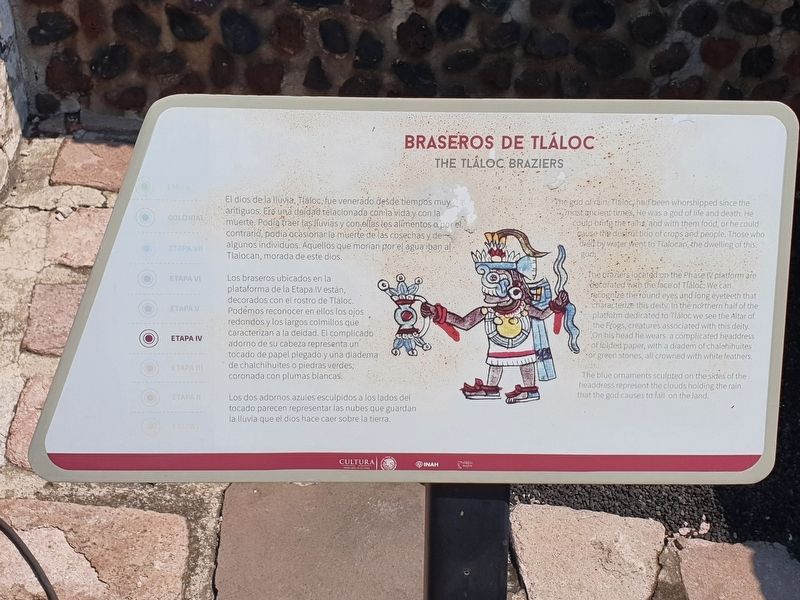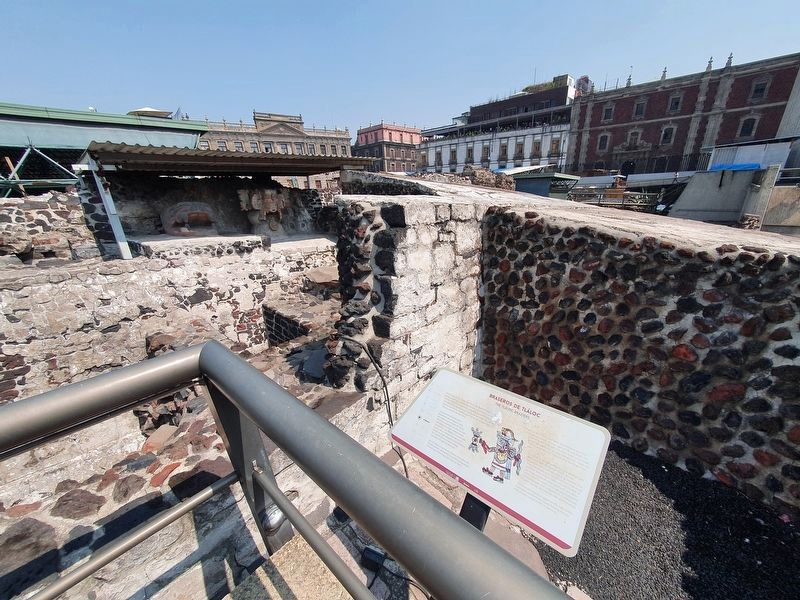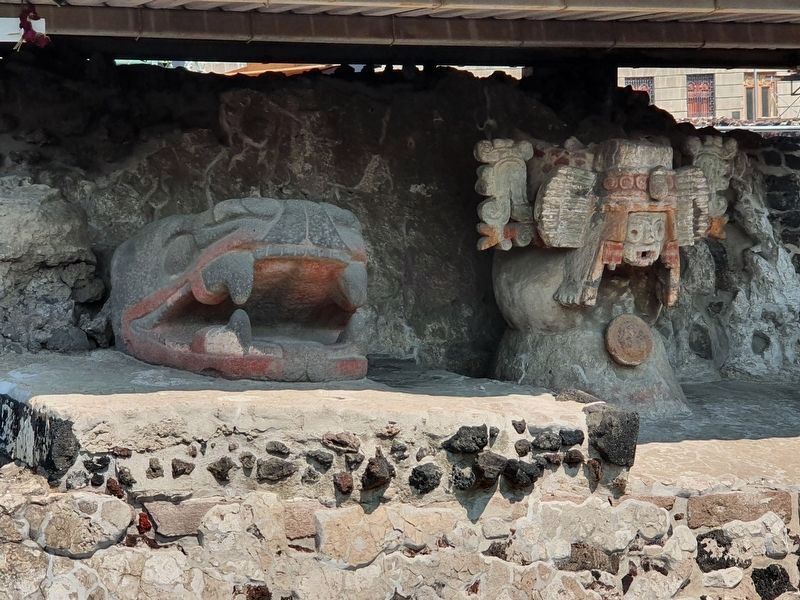Centro Histórico in Ciudad de México, Mexico — The Valley of Mexico (The Central Highlands)
The Tláloc Braziers
Etapa IV
El dios de la lluvia, Tlaloc, fue venerado desde tiempos muy antiguos. Era una deidad relacionada con la vida y con la muerte. Podía traer las lluvias y con ellas los alimentos o porel. contrario, podía ocasionar la muerte de las cosechas y de algunos individuos. Aquellos que morían por el agua iban al Tlalocan, morada de este dios.
Los braseros ubicados en la plataforma de la Etapa IV están, decorados con el rostro de Tláloc. Podemos reconocer en ellos los ojos redondos y los largos colmillos que caracterizan a la deidad. El complicado adorno de su cabeza representa un tocado de papel plegado y una diadema de chalchihuites o piedras verdes; coronada con plumas blancas.
Los dos adornos azules esculpidos a los lados del tocado parecen representar las nubes que guardan la lluvia que el dios hace caer sobre la tierra.
The Tláloc Braziers
The god of rain, Tlaloc, had been whorshipped since the most ancient times, He was a god of life and death. He could bring the rains, and with them food, or he could cause the destruction of crops and people. Those who died by water went to Tlalocan, the dwelling of this god.
The braziers located on the Phase IV platform are decorated with the face of Tlaloc: We can recognize the round eyes and long eyeteeth that characterize this deity. In the northern half of the platform dedicated to Tlaloc we see the Altar of the Frogs, creatures associated with this deity. On his head he wears a complicated headdress of folded paper, with a diadem of chalchihuites or green stones, all crowned with white feathers.
The blue ornaments sculpted on the sides of the headdress represent the clouds holding the rain that the god causes to fall on the land.
Topics. This historical marker is listed in these topic lists: Anthropology & Archaeology • Architecture • Churches & Religion.
Location. 19° 26.1′ N, 99° 7.867′ W. Marker is in Ciudad de México. It is in Centro Histórico. Marker is on Seminario just north of Plaza de la Constitución, on the right when traveling north. The marker is on the grounds of the Templo Mayor Museum. Touch for map. Marker is in this post office area: Ciudad de México 06000, Mexico. Touch for directions.
Other nearby markers. At least 8 other markers are within walking distance of this marker. Offering 17 (a few steps from this marker); Commemorative Dates in the Great Temple (a few steps from this marker); Eastern Border of the Sacred Center
(within shouting distance of this marker); Colonial Arch and Platform from Phase V (within shouting distance of this marker); The Huitzilopochtli Braziers (within shouting distance of this marker); Templo Mayor Museum (within shouting distance of this marker); Ocelotl-Cuauhxicalli (within shouting distance of this marker); South Red Temple (within shouting distance of this marker). Touch for a list and map of all markers in Ciudad de México.
Credits. This page was last revised on February 7, 2023. It was originally submitted on September 8, 2022, by J. Makali Bruton of Accra, Ghana. This page has been viewed 69 times since then and 16 times this year. Photos: 1, 2, 3. submitted on September 8, 2022, by J. Makali Bruton of Accra, Ghana.


